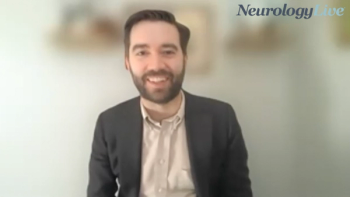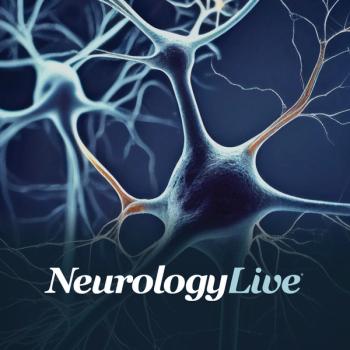
- December 2019
- Volume 2
- Issue 8
Managing Vestibular Migraine: Optimizing Diagnosis and Treatment
With a differential diagnosis that varies from patient to patient, identifying and treating vestibular migraine continues to challenge even the most experienced clinicians.
Jennifer Kriegler, MD
Vestibular migraine, a condition characterized by episodic symptoms of severe vertigo with or without headaches, can signifi- cantly interfere with patient quality of life. Not only are the symptoms disruptive when they occur, but apprehension that an episode could potentially occur can lead to patient anxiety as well. The condition is typically chronic, and individuals may experience more frequent bouts of vestibular migraine for months or years at a time, with intermittent gaps of relative improvement.
Vestibular migraine can affect individuals of all ages, although it tends to begin during the young-adult years. There is a familial propensity to developing the disorder, although it can occur sporadically as well. People may develop episodes in association with certain triggers, which often include the same triggers that elicit their nonvestibular migraines.1
Even for headache specialists, vestibular migraine is not always a clear-cut diagnosis. Experts suggest that the condition is underdiagnosed clinically,1 and challenges with respect to effective and accessible treatment options remain.
The International Headache Society and the Bárány Society: The International Society for Neuro-otology have developed a consensus document with diagnostic criteria for vestibular migraine. The diagnosis is based on recognizing the clinical features of vestibular migraine as well as excluding other conditions that are part of the differential diagnosis.
Traditional migraine therapies—both abortive and prophylactic—have been the mainstay of treatment for vestibular migraine. Noninvasive vagal nerve stimulation (nVNS), a self-administered procedure that has been utilized in the treatment of nonvestibular migraine, is among the new approaches being considered in the treatment armamentarium for acute episodes of vestibular migraine. Given the history of this therapy in the treatment of other central nervous system disorders, its adverse effect and safety profile has been fairly well established and reported. As nVNS therapy remains under investigation for the treatment of acute vestibular migraine, more information regarding its efficacy in managing the symptoms of this condition may continue to emerge.
Etiology
Vestibular migraine is considered the most common cause of recurrent spontaneous vertigo attacks.1 The pathophysiology and etiology of the condition have been examined in a number of studies, but these generally tend to be relatively small, often including fewer than 100 patients. Structural changes, inflammatory markers, and genetic alterations have all been explored in an attempt to define the cause of vestibular migraine (FIGURE).
Functional magnetic resonance imaging (MRI) has been used to identify brain regions that may predispose to the condition or may be altered in association with acute attacks. The identification of genetic defects and inflammatory markers have not been as clear in the context of vestibular migraine as they have been in the study of other vestibular disorders, like Ménière’s disease, and migraine disorders, such as CADASIL syndrome [cerebral autosomal dominant arteriopathy with subcortical infarcts and leukoencephalopathy].2
Studies that target the identification of the pathophysiologic features of vestibular migraine have, nevertheless, yielded a few recurrent observations. Marianne Dieterich, MD, and co-authors reported “cortical regions activated by vestibular stimulation in human functional imaging studies include those also involved in pain perception—for example, the posterior and anterior insula, the orbitofrontal cortex, and the cingulate gyrus.”3 They suggest that “migraine-related vestibular disorders like vestibular migraine may be caused by enhanced excitability occurring during the processing of sensory information. The enhanced excitation induces interactions of vestibular and pain pathways on several levels, from the inner ear to the thalamus and cortical level.” The relationship between vestibular and sensory cortical excitability, they suggest, could be rooted in a genetic susceptibility.
In fact, while genetic studies have not been firmly conclusive in terms of identifying an inheritance pattern or a specific gene (or set of genes) in the context of vestibular migraine, results of genetic studies support the idea that chromosomal alterations may play a role in the predisposition to vestibular migraines for some people.
“Familial occurrence has been reported in some patients with an autosomal dominant pattern of inheritance and decreased penetrance in men. The genetics of vestibular migraine are heterogeneous and uncertain, but several studies suggest linkage to chromosome 5q35 [47] or 22q12,” Isabel Luzeiro, MD, and colleagues wrote.4
In general, an understanding of the pathophysiology of a disease is often at least partially advantageous in defining diagnostic criteria and/or for determining potentially effective therapies. In the case of vestibular migraine, the pathophysiology is not explicitly linked to the diagnostic criteria or to the mainstay and emerging therapies.
Clinical Presentation
The clinical presentation of vestibular migraine is not considered consistent or straightforward. Patients often present to their primary care physi- cians with complaints of episodes that may involve a combination of dizziness, lightheadedness, vertigo, nausea, vomiting, and/or head pain.
“Vestibular symptoms include both a sense of false internal or external motion, visual motion sensitivity, positional vertigo, and head motion vertigo,” Jennifer Kriegler, MD, a headache specialist with the Center for Neurological Restoration at Cleveland Clinic in Ohio, told NeurologyLive®. Yet, as David Watson, MD, chair and director of West Virginia University Headache Center, explained, not every patient who experiences migraines and vestibular symptoms is necessarily afflicted by vestibular migraine. “Vestibular symptoms are common, and migraine is common. They often occur in the same person. Sometimes they are part of the same process, such as in vestibular migraine,” Watson said.
These patients are eventually referred to a number of consulting physicians, including neurologists, cardiologists, and/or ear, nose, and throat specialists, often based on their predominant symptoms. Even after referral to a specialist, it can take months or years for these patients to receive a definitive diagnosis. Concerns about potentially disabling conditions frequently arise based on the clinical presentation. Gayle Rebovich, MD, division director of neurology at Roger Williams Medical Center in Providence, Rhode Island, told NeurologyLive® that “with regular migraine, we can usually proceed directly to treatment based on history and exam alone. The difficulty is that the symptoms of vestibular migraine can appear to represent posterior circulation stroke, transient ischemic attack, or peripheral vestibulopathy.”
Clinical Evaluation and Diagnostic Criteria
Diagnostic criteria have been established only relatively recently, in 2012.5 While neurologists and other specialists have been diagnosing and treating vestibular migraine prior to the formulation of these guidelines, these parameters offer a more standardized approach
that can be used across multiple specialties and disciplines.
Despite the existence of formal criteria, however, a number of hurdles exist when it comes to diagnosis of this disorder. “The challenges related to diagnosis of vestibular migraine lie in its relatively broad spectrum of manifestations, the absence of typical migraine headaches with vestibular symptoms, and its very recent definition as a distinct entity,” Huang and colleagues wrote.1
In real-world practice, the differential diagnosis can vary based on an individual patient’s presentation. Therefore, the methods used to exclude other potential entities require careful clinical consideration. Neurologists who are referred patients with symptoms of vestibular migraine must rule out other, more precarious disease processes in the initial workup phase, which can involve a variety of specialized tests. “Diagnosis is often delayed because these patients require a more extensive diagnostic workup to rule out other issues. I will therefore get an MRI of the brain and internal auditory canals with and without gadolinium and usually vascular imaging of the head and neck—either computed tomography angiography or magnetic resonance angiog- raphy—to visualize the posterior vasculature,” Rebovich said. Once other conditions in the differential diagnosis are ruled out, however, no testing mechanism exists for formally confirming a diagnosis of vestibular migraine. “Clinical tests of vestibular function are typically normal, or difficult to interpret based on inconsistent results reported in earlier studies,” Huang et al wrote.1
"With regular migraine, we can usually proceed directly to treatment based on history and exam alone. The difficulty is that the symptoms of vestibular migraine can appear to represent posterior circulation stroke, transient ischemic attack, or peripheral vestibulopathy," said Gayle Rebovich, MD.
It is important to note that even when vascular events are ruled out, the features of vestibular migraine can be mistaken for those of other types of migraine. “Vestibular migraine should not be confused with migraine with brainstem aura when the vertigo occurs as an aura, which occurs 5 to 60 minutes preceding the migraine headache. Migraine with brainstem aura requires at least 2 brainstem symptoms. Vertigo occurs in up to 60% of patients in addition to visual, sensory, or dysphasia aura symptoms,” Kriegler said.
Ruling out other entities often relies, at least partially, on diagnostic tests. But ruling in vestibular migraine is a purely clinical decision-making process that relies on confirming several symptomatic features. “Patients must have a diagnosis of current or past history of migraine with or without aura, vestibular symptoms that last between 5 minutes and 72 hours, and at least 1 of the following 3 migrainous features: photophobia and phonophobia, visual aura, and headache with at least 2 of the following 4 characteristics: unilateral location, pulsating quality, moderate or severe intensity, or aggravation by routine physical activity,” Kriegler said.
Sometimes, patients are started on empirical treatment without a definitive diagnosis, and in some cases, a treatment response may help direct diagnostic decision making. “We may try a course of vestibular therapy to see if they derive any benefit from that. If [they do] not, this supports the diagnosis of vestibular migraine,” Rebovich added.
Current and Emerging Treatments
Patients who suffer from recurrent migraine episodes may need to be provided with a treatment strategy that includes preventative care as well as a plan for abortive therapy. Neurologists generally use the same 2-pronged approach when taking care of patients who experience recurrent vestibular migraines. When patients have frequent, unpredictable, or disabling symptoms, prevention is certainly an important consideration.
“Prevention remains key, and I find antiepileptic drugs (AEDs) or venlafaxine to be most effective,” Watson said. “If the vestibular symptoms are part of migraine, the prognosis is pretty good.” However, not all preventative medications are accessible for each patient, and some treatments that are FDA-approved for migraine prophylaxis are not approved for vestibular migraine, making payer authorization for off-label use in vestibular migraine another impediment.
“I generally treat patients who have vestibular migraine prophylactically just like I do ‘regular migraine’ patients, and it depends what their insurance will approve. Options for prophylaxis include amitriptyline, propranolol, and topiramate. My preference—but often not approved up-front by insurance—would be 1 of the 3 anti—calcitonin gene-related peptide injectables: erenumab (Aimovig), fremanezumab (Ajovy), or galcanezumab (Emgality),” Rebovich said. Other treatments used for prevention of vestibular migraine include flunarizine and cinnarizine, AEDs (valproic acid, topiramate, and lamotrigine), beta blockers (propranolol and metoprolol), antidepressants (such as amitriptyline), and magnesium and clonazepam.4
In addition to prophylaxis, some patients also benefit from using abortive therapies when they experience an episode of vestibular migraine. “In terms of abortive therapy, I am more likely to give benzodiazepines and not give triptans to patients who have vestibular migraine,” Rebovich said. In fact, evidence regarding efficacy of triptans as abortives in the context of acute vestibular migraine is lacking, despite several investigational studies. “Randomized and controlled studies with triptans—zolmitriptan versus placebo during vestibular migraine attacks and rizatriptan versus placebo—produced inconclusive evidence,” according to Luzeiro et al.4
Implantable devices used to deliver VNS have not been successful alternatives in the treatment of vestibular migraine for a number of reasons, including a lack of proven efficacy and an inherent impracticality for patients. “I am generally not a fan of vagal nerve stimulation for vestibular migraine because the implant renders it difficult to impossible to get a future MRI if my patient were to ever need one. Most of these patients are young, so it’s likely that they would need an MRI of some sort in their future decades of life,” Rebovich said. Payers have not been convinced that an implant is cost-effective, either. “It is somewhat expensive and insurers remain skeptical,” Watson added.
However, among the newer approaches to abortive therapy in vestibular migraine, nVNS has shown some promise. It does not require a surgical procedure for implantation and it does not entail the patient commitment to an embedded device. Patients must have a prescription to obtain a nVNS device, and they can usually watch instructional videos to learn how to self-administer the treatment. While there are increasing data regarding the effects of nVNS in the treatment of acute and chronic migraine, not as many studies are available that report the effects of nVNS on the symptoms of vestibular migraine, either prophylactically or as an acute therapy.
Recently, Deborah Friedman, MD, and Shin C. Beh, MD, of UT Southwest Medical Center in Dallas, Texas, published a retrospective chart review in Neurology 6 to examine the effects of nVNS on acute vestibular migraine. They compared the effects of nVNS in patients with vestibular migraine with its effects in patients who had another diagnosis: persistent perceptual postural dizziness (PPPD). The study included 18 patients with vestibular migraine; 14 participants were ultimately treated for a vestibular migraine attack and 4 were treated for bothersome symptoms consistent with PPPD. Patients graded the severity of their vestibular symp- toms and headache using an 11-point visual analogue scale at baseline and 15 minutes after treatment with nVNS. The results showed a substantial improvement for patients with vestibular migraine compared with those with PPPD. The investigators reported that mean vertigo intensity before nVNS was 5.2 compared with 3.1 after stimulation, with a mean reduction in vertigo intensity of 46.9%. In terms of headache, mean severity was graded as a 6.0 prior to treatment and 2.4 after treatments, with a mean reduction in headache intensity of 63.3%. Notably, patients with suspected PPPD reported no benefit.
Friedman and Beh concluded that their study results “provide preliminary evidence that nVNS may provide rapid relief of vertigo and headache in acute vestibular migraine, and support further randomized, sham-controlled studies into nVNS in vestibular migraine.”6
Whether nVNS will prove to be a beneficial and practical treat- ment strategy for abortive or prophylactic management of vestibular migraines remains to be seen. This therapeutic approach has also been used in the prevention of nonvestibular migraine, also with promising results and a paucity of reported adverse effects.7
REFERENCES
1. Huang TC, Wang SJ, Kheradmand A. Vestibular migraine: an update on current understanding and future directions [published online August 8, 2019]. Cephalalgia. doi: 10.1177/0333102419869317.
2. Flook M, Frejo L, Gallego-Martinez A, et al. Differential proinflammatory signature in vestibular migraine and Ménière disease. Front Immunol. 2019;10:1229. doi: 10.3389/fimmu.2019.01229.
3. Dieterich M, Obermann M, Celebisoy N. Vestibular migraine: the most frequent entity of episodic vertigo. J Neurol. 2016;263 (Suppl 1):S82-S89. doi: 10.1007/s00415-015-7905-2.
4. Luzeiro I, Luís L, Gonçalves F, Pavão Martins I. Vestibular migraine: clinical challenges and opportuni- ties for multidisciplinarity. Behav Neurol. 2016;2016:6179805. doi: 10.1155/2016/6179805.
5. Lempert T, Olesen J, Furman J, et al. Vestibular migraine: diagnostic criteria. J Vestib Res. 2012;22(4):167-172. doi: 10.3233/VES-2012-0453.
6. Beh SC, Friedman DI. Acute vestibular migraine treatment with noninvasive vagus nerve stimulation. Neurology. 2019;93(18):e1715-e1719. doi: 10.1212/WNL.0000000000008388.
7. Silberstein SD, Calhoun AH, Lipton RB, et al; EVENT Study Group. Chronic migraine headache preven- tion with noninvasive vagus nerve stimulation: the EVENT study. Neurology. 2016;87(5):529-538. doi: 10.1212/WNL.0000000000002918.
Articles in this issue
almost 6 years ago
A Neurology Pipeline for the Agesalmost 6 years ago
Eisai Stays the Course on Amyloid Despite Setbacksalmost 6 years ago
Exploring the Potential of Immunotherapy for Movement Disordersalmost 6 years ago
Addressing Insomnia in the Elderlyalmost 6 years ago
Studies Investigate 2 Doses of Fenfluramine in Dravet Syndromealmost 6 years ago
Targeting the NF-kB Pathway in Duchenne Muscular DystrophyNewsletter
Keep your finger on the pulse of neurology—subscribe to NeurologyLive for expert interviews, new data, and breakthrough treatment updates.



































